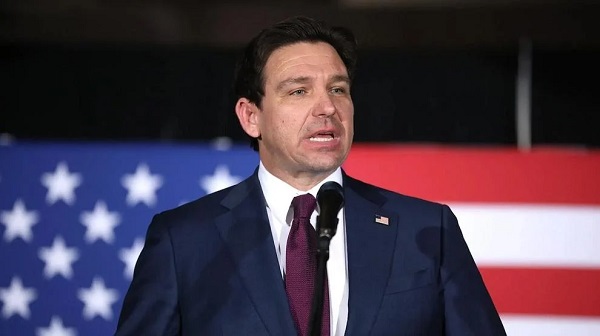Business
What is a Retirement Compensation Arrangement (“RCA”)?

An RCA is a plan that is funded by contributions from employers and employees to a custodian who manages the funds. RCAs are used to fund the retirement of an employee, their loss of employment or a substantial change in the services that they provide.
How it works?
Employers make annual tax deductible contributions to an RCA that are subject to a refundable 50% withholding tax. Since the payments are not made to the employee, they are not subject to any tax implications in the year the contributions are made. When payments are made from the plan to the employee, the refundable taxes paid are recovered at the same rate (e.g. $1 of every $2 paid). All income earned within the plan is subject to the refundable 50% tax and is recoverable at the same rate as above. The employee pays personal tax on distributions from the RCA in the year they are received.
Employees can also make tax deductible contributions to an RCA. The contributions are similarly considered deductible and subject to the 50% refundable withholding tax.
Types of plans
An RCA can be set up as either a Defined Benefit Plan (“DBP”) or a Defined Contribution Plan (“DCP”). As the title suggests, a DBP provides employees with a defined pension amount annually, upon retirement. Whereas employees on a DCP will receive only what was contributed to the plan, plus any income earned or less any losses incurred, a DBP will require the periodic involvement of an actuary to determine whether the plan is properly funded.
A DBP puts the risk of losses on investments in the hands of the employer and a DCP passes that risk to the employees as they will receive what is remaining in the plan.
Who will benefit from RCAs?
Employees
Employees who participate in an RCA will enjoy future pension benefits and peace of mind knowing that, if the employer were to close down and they lost their employment, the assets of the RCA would be protected against the creditors of the employer.
The 50% refundable withholding rate is currently less than the top tax bracket in a number of provinces. As such, the after-tax investment for the pension is no longer considered a disadvantage to RCAs for high-income earning employees as the plan will invest 50% of the amount they are paid as opposed to less than 50%, had they been paid as a salary.
Contributions to the RCA by an employer will not reduce the RRSP contribution room for the employee, which is not the case for contributions made to a Retirement Pension Plan (“RPP”).
Further tax savings can be obtained by paying the employees out of the RCA in future years when their income levels are lower and subject to lower marginal tax rates. When you consider the ability to include income in lower income earning years, employees living in provinces and territories not subject to >50% tax at the top rate can still benefit from an RCA.
Employers
Employers may wish to provide a retirement package for their employees but not pay the high costs of operating an RPP or an Individual Pension Plan (“IPP”). If the owner-manager of the company or someone already within the company completes the required remittance forms and bookkeeping for the plan, the costs associated with an RCA would include the preparation of the trust return, identified above, and investment advisor fees, if an advisor is used. Additional costs may be applicable for DPBs since possible periodic actuarial valuations may be needed to ensure the plan is properly funded.
Employers can also utilize RCAs for what’s referred to as “Golden Handcuffs,” meaning they can require an employee to meet certain length-of-employment requirements before the pension contributions vest. This will help employers retain key employees that are vital to their operations.
Tax benefits for employer
One group that may benefit most from these plans are companies involved in Scientific Research and Experimental Development (“SRED”) that must maintain low taxable income and taxable capital figures to retain their benefits from the enhanced investment tax credits. Since the taxable income and taxable capital figures exceed $500,000 and $10,000,000, respectively, the amount eligible for the enhanced tax credit decreases.
Federally, expenditures eligible for the enhanced tax credit are eligible for a 35% tax credit, whereas expenditures not eligible only provide for a 15% tax credit. When you also consider the provincial tax credit implications, it’s critical for these companies to maintain sufficient expenditure pool levels.
One common method for ensuring low income and taxable capital figures is to declare bonuses for the owner-managers and to pay those bonuses out of the company to reduce taxable capital. This is a good opportunity to use RCAs. The top tax rate in seven of Canada’s thirteen provinces or territories is over 50%. Given the RCA withholding rates are currently 50%, this can provide a deferral of up to 4% depending on your province. When you add the additional payroll costs, this can result in significant savings.
How much should be contributed?
An employer must be careful not to contribute an unreasonable amount to the plan on behalf of an employee as it could result in the plan being re-characterized as an SDA. The starting point for a reasonable DCP amount would be the 18% that is used to create RRSP deduction room annually. A higher rate would likely require a very strong argument as to why it’s reasonable.
A DBP requires a certain level of assets to be held within the plan to support the future pension obligations that an actuary has calculated. Given that the plan will require a certain amount, a reasonable contribution will be the amount that brings the assets of that plan to a sufficient level to fund that obligation. The pension benefit, however, must be considered a reasonable amount. Again, a reasonable amount will vary based on the facts of each situation.
The CRA has indicated that it will permit a deduction for recognition of an employee’s years of services even if it occurred prior to the establishment of the RCA.1 Since past years of service can be recognized, large contributions may be eligible when the RCA is initially established.
Careful planning is required to ensure that the plan meets the criteria of an RCA as adverse tax effects could result otherwise. You should seek professional advice if you are setting up an RCA.
Jesse Genereaux is a tax manager in the Durham office of Collins Barrow.
Want to get in touch with Jesse?
Connect with him by email at [email protected].
Business
COP30 finally admits what resource workers already knew: prosperity and lower emissions must go hand in hand

From Resource Works
What a difference a few weeks make
Finally, the Conference of the Parties to the UN climate convention (COP30) adopted a pragmatic tone that will appeal to the working class. Too bad it took thirty meetings. Pragmatism produces results, not missed targets.
We should not have been surprised. Influential figures like Bill Gates and Canadian-Venezuelan analyst Quico Toro, who have long argued that efforts to reduce CO₂ should focus more on technology and prosperity, and less on energy consumption and declining growth, have gained ground.
In the World Energy Outlook 2025, prepared by the International Energy Agency for COP30, you can see that many of the views held by the people above had already gone mainstream before the conference started.
The World Energy Outlook 2025 lays out three scenarios: Current Policies (CPS), Stated Policies (STEPS), and Net Zero Emissions by 2050 (NZE). In WEO 2025, all three scenarios reflect longer timelines for the decline of fossil fuels than in earlier editions, and the NZE pathway explicitly states that major technological breakthroughs will be required.
Unfortunately, many potential technologies are adamantly opposed by the loudest groups within the Climate Change Movement because they are not perfect. Even some continue to oppose nuclear power, one of the few proven sources of large-scale, zero-carbon, firm electricity.
Another noteworthy standout in WEO 2025 was the strong recognition that energy security, costs, and supply chains are now the primary considerations in determining each country’s energy mix.
What all this means is we are breaking away from emotionally charged, fear-based policies and rhetoric and moving toward a practical “let’s do things better” approach.
For 30 years, the radical leadership of the environmental movement has focused on what we should stop doing and on sacrificing prosperity. Essentially, what has been going on is an attack on working people in the industrialized and developing world.
Today, workers in the developed world are so anxious that many are losing faith in democratic institutions. Meanwhile, people in the emerging and developing world see light at the end of the tunnel and are determined to industrialize.
Clearly, it is time to merge the fight to lower CO₂ emissions with prosperity. “Let’s do things better” captures the history of human progress and resonates with working people today.
What does it take for longer, healthier, safer, and more sustainable lives? It takes the pragmatism of workers. They spend their lives striving to improve workplace safety, to develop tools that enable them to perform tasks more effectively with less physical effort, to earn higher pay, to produce more food with less land, and to preserve their opportunity to continue working.
Resource workers have felt under attack and are humiliated when celebrities fly in on a helicopter to denigrate their work and make references to the virtues of small-plot gardening, or politicians who tell them to go back to school for “jobs of the future”, only to find themselves in low-paying service jobs.
As the COP30 discussion indicates, we have reached a turning point. It is time to focus on doing what needs to be done, but doing it better. It is time to stop banning activities entirely as though circumstances and technology never change. Demanding perfection hides what is possible, slows progress and, in some cases, stops it altogether.
Bill Gates’ memo to COP30 points to the turn in the road:
“We should measure success by our impact on human welfare more than our impact on the global temperature, and our success relies on putting energy, health, and agriculture at the centre of our strategies.”
Gates also makes a point that will resonate with working people: “Using more energy is a good thing because it is closely correlated with economic growth.” Ironically, a statement made by a billionaire resonates with working people more than does the message of many climate activists.
The work at the Port of Prince Rupert comes to mind, given its growing role in supplying cleaner cooking and heating fuels, when we are reminded that 2 billion people worldwide cook and/or heat their homes with highly polluting open fires (wood, charcoal, dung, agricultural waste).
Persuasion published Quico Toro’s essay on November 13, 2025, which speaks another truth.
“COP imagines these emissions as something a country’s government can set, like the dial on a thermostat. But emissions are more like GDP: the outcome of a complex process that politicians would like to be able to control, but do not actually control.”
I am feeling more secure about the future here in Canada and BC, as governments, First Nations and the public are leaning into climate and economic pragmatism.
There will be hard discussions and uncomfortable trade-offs. Past decisions need to be re-examined in good faith. Do they meet today’s demands? Are we doing what needs to be done better? Is it the right move for today’s youth and future generations? Will we bring back the hope and opportunity of a growing middle class?
Nobody, not the Liberal government, the BC NDP government, First Nations, none of us would have predicted the world we are facing today, where our economy and sovereignty are challenged.
Today, oil, natural gas, and critical minerals, not one or two but all three, are the financial backstop Canada needs, as we rebuild the economy and secure our sovereignty.
Look West: Jobs and Prosperity for Stronger BC and Canada is as much of an admission that we are falling behind as it is a call to action. Success will take billions of dollars, the exact amount unknown.
But what we do know is that oil, gas, and critical minerals generate the most public revenue, the highest incomes, and are our most significant exports. They are Canada’s bank and comparative advantage. They will provide the cash flow needed to get it done.
Not maximizing oil production and exports is fighting with both hands tied behind our back. We all know it; now we need to focus on doing it better because circumstances have changed dramatically.
Jim Rushton is a 46-year veteran of BC’s resource and transportation sectors, with experience in union representation, economic development, and terminal management.
Resource Works News
Business
Canada’s recent economic growth performance has been awful

From the Fraser Institute
By Ben Eisen and Milagros Palacios
Recently, Statistics Canada released a revision of its calculations of Canada’s gross domestic product (GDP) in recent years. GDP measures the total production in an economy in a given year, and per-person GDP is widely accepted by economists as one of the most useful metrics for assessing quality of life. The new estimate places Canada’s GDP for 2024 at 1.4 per cent larger than previously reported.
By the standards of these sorts of revisions—which are usually quite small—the recent update is significant. But make no mistake, the new numbers do not change the fundamental story of Canada’s economic performance, which has been one of historically weak growth and stagnant living standards for an unusually long stretch of time.
Let’s get into the numbers (all adjusted for inflation, in 2017 dollars) with some historical perspective. The new figures put Canada’s per-person GDP estimate for 2024 at $59,529. By comparison, in 2019 per-person GDP was slightly higher at $59,581. This means there has been no progress at all in Canadian living standards as measured by per-person GDP over the past five years. Even with the revision, five years of flat living standards is an extraordinary result.
This is historically anomalous. From 2000 to 2018—a period that was itself not especially strong by the standards of earlier decades—per-person GDP still grew at a compounded annual rate of just under one per cent. In the 1990s, growth was faster still at roughly 1.8 per cent annually. In both periods, living standards were rising meaningfully, even if the pace varied. The fact that they have completely stagnated for five years is alarming, even if our GDP numbers aren’t quite as bleak as we believed a few weeks ago.
Some pundits determined to view all economic data through a political lens have emphasized that under the new revisions, the overall rate of per-person growth during Justin Trudeau’s time as prime minister is now approximately the same as what occurred during Stephen Harper’s tenure.
However, this is more relevant as a political talking point than an economic insight. The historical data show that at an average annual growth rate of just 0.5 per cent, the Canadian economy’s performance under Harper was weak by long-term standards. This is something that Trudeau himself recognized when he first sought high office, criticizing the Harper government for “having the worst record on economic growth since R.B. Bennett in the depths of the Great Depression.”
Trudeau was right back then that Canadian economic growth during the Harper era was historically weak. As such, a revision showing that Canada’s slow growth has approximately continued for the past decade is hardly cause for celebration. It simply underscores that both governments presided over a long period of weak productivity growth and very slow improvements in living standards—and that in recent years even that sluggish growth has given way to complete stagnation.
Of course, an upward revision to recent GDP calculations is welcome news, but it must not be allowed to distract policymakers or the public from the reality of Canada’s severe long-term growth problem, which in recent years has gone from bad to worse.
-

 Great Reset2 days ago
Great Reset2 days agoViral TikTok video shows 7-year-old cuddling great-grandfather before he’s euthanized
-

 Alberta2 days ago
Alberta2 days agoSchools should go back to basics to mitigate effects of AI
-

 Daily Caller2 days ago
Daily Caller2 days agoChinese Billionaire Tried To Build US-Born Baby Empire As Overseas Elites Turn To American Surrogates
-

 International2 days ago
International2 days agoAt Least 15 Killed In Shooting Targeting Jewish Community At Australia’s Bondi Beach, Police Say
-

 Business2 days ago
Business2 days agoMajor tax changes in 2026: Report
-

 International2 days ago
International2 days agoTwo states designate Muslim group as terrorist
-

 Digital ID1 day ago
Digital ID1 day agoCanada releases new digital ID app for personal documents despite privacy concerns
-

 Bruce Dowbiggin1 day ago
Bruce Dowbiggin1 day agoNFL Ice Bowls Turn Down The Thermostat on Climate Change Hysteria






